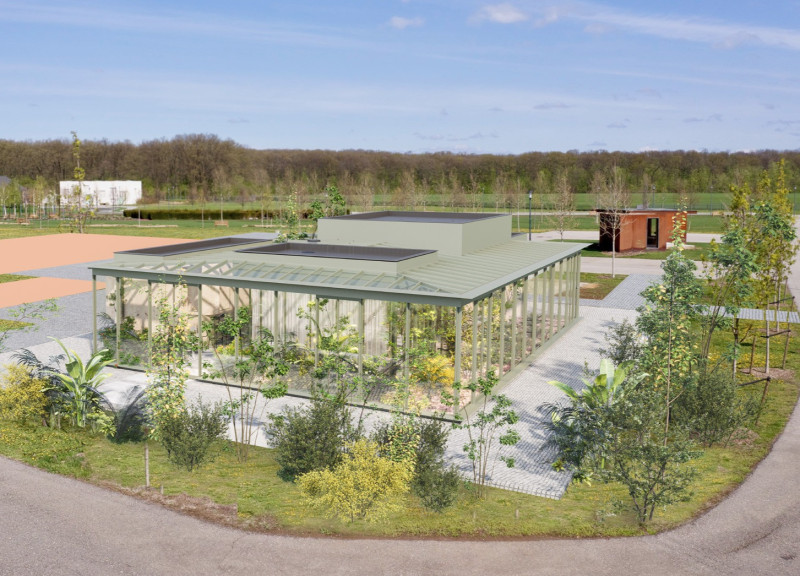5 key facts about this project
The overall layout of the project reflects a careful consideration of both the physical and social landscapes surrounding the site. The design employs an open floor plan that emphasizes connectivity amongst spaces, allowing for natural light to penetrate deeply into the interior while offering residents and visitors a sense of comfort and accessibility. This approach not only optimizes the use of space but also ensures an inviting atmosphere that encourages communal activities.
A key characteristic of the project is its material palette, which has been selected to harmonize with the local context and climate. Utilization of sustainable materials such as reclaimed wood and low-emissivity glass highlights a commitment to ecological responsibility while delivering aesthetic value. The choice of these materials speaks to a broader trend in architecture, where the focus on reducing environmental impact is paired with the desire to create visually appealing structures that resonate with their surroundings.
One of the unique design approaches employed in this project is the integration of outdoor spaces with indoor environments, blurring the lines between interior and exterior. This is achieved through the strategic placement of large windows and sliding glass doors that not only invite natural light but also provide unobstructed views of the landscape. The inclusion of terraces and balconies further extends living spaces into the environment, creating opportunities for relaxation and a connection with nature.
Landscaping plays a crucial role in reinforcing the architectural identity of the project. Thoughtfully designed green areas act as extensions of the living spaces, promoting biodiversity and fostering a sense of tranquility. The landscape design encourages outdoor activities while contributing to the building’s overall sustainability strategy by managing rainwater runoff and reducing the urban heat island effect.
From a functional perspective, the project accommodates diverse uses, incorporating residential units alongside community facilities. This mixed-use approach serves to activate the space, drawing people in and cultivating a vibrant atmosphere. Commune areas, such as shared lounges and meeting rooms, support social interaction, while designated quiet zones offer privacy for residents.
The project also demonstrates a sophisticated understanding of environmental orientation, employing passive design strategies to enhance energy efficiency. By utilizing the natural topography and prevailing winds, the building is positioned to maximize energy savings and create a comfortable living environment throughout the year. This focus on sustainability is further underscored by the implementation of energy-efficient systems and materials that contribute to a reduced carbon footprint.
In addition to its architectural merits, the project is significant in its contribution to community identity. It reflects local traditions and cultural elements, integrating them into the modern design narrative. This thoughtful integration fosters a sense of belonging and pride among residents, linking the structure with the larger historical and cultural context of the area.
As you engage with this project, consider exploring the architectural plans and sections. These elements provide essential insights into the spatial organization and flow of the design, allowing for a deeper understanding of how form and function come together. Additionally, reviewing the detailed architectural designs and ideas behind the project can shed light on the innovative approaches taken to address contemporary challenges in architecture. The interplay of aesthetics, sustainability, and community engagement is at the core of this project, reflecting a forward-thinking approach to modern architectural practice.


 Maria Dragomirescu,
Maria Dragomirescu,  Marian-alexandru Dinu
Marian-alexandru Dinu 




















